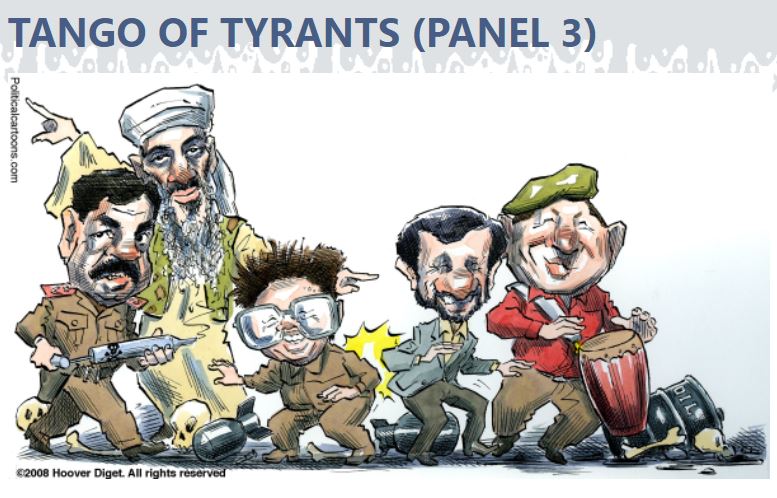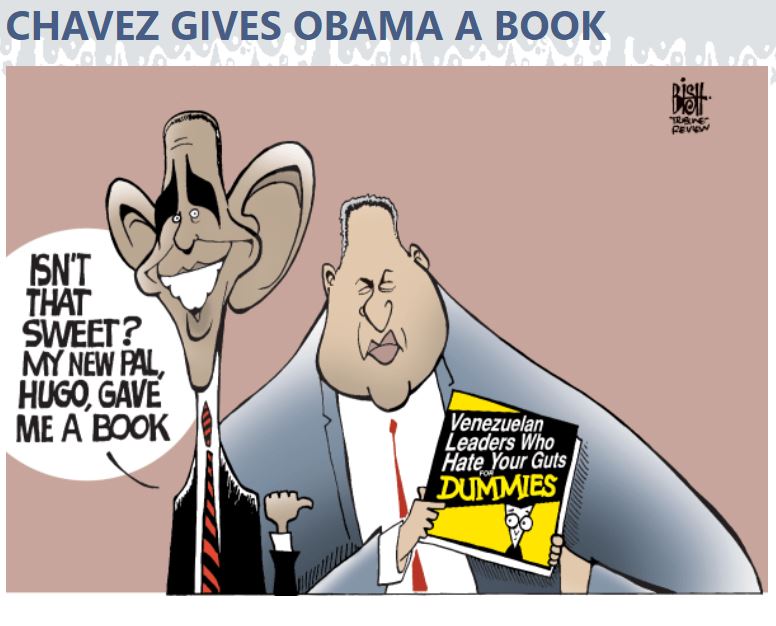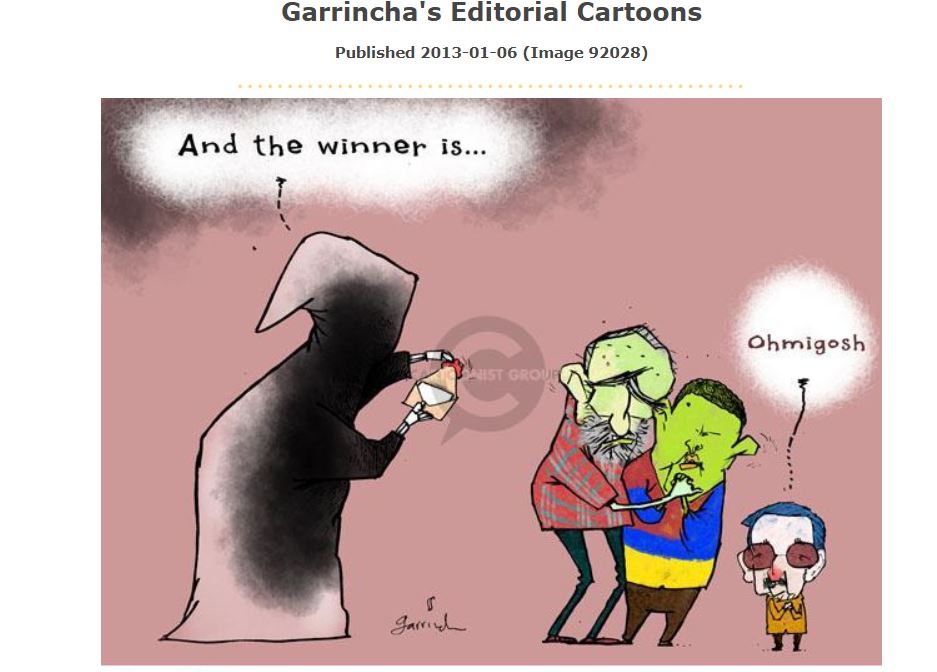Colorism
Political Cartoons
Colorism in the political cartoons we analyzed is shown in a notably comparable way. The context of the photo determines the color of Chavez’s skin. When Chavez is with other foreign leaders that are not from the United States, his skin color is portrayed as relatively similar to those leaders. This similarity intentionally generates a homogeneous look to all these leaders, creating a baseline of what skin color to fear. Since these leaders are a threat, their skin color has a significant impact on their character. The decision to make Chavez’s skin tone match the other leaders represented in the political cartoons also happens with Obama. However, in these political cartoons, Chavez’s skin tone is darker, making it as similar to Obama’s as possible. The impact of connecting Obama and Chavez furthers the idea that Obama is not loyal to the American people because he has ideas that are foreign to the United States.
At the time of Chavez’s death, he is almost always portrayed as white or green, nearly looking translucent. This depiction connects to the perceived decrease in Chavez’s aggression and dominance over conversations. Americans fear Chavez less when he is white since white figures are seen as less of a threat, which Chavez was at the time. This notion additionally connects why Castro is nearly always drawn as translucent white or sickly green. Castro was not seen as much of a threat himself by the American people during the time the political cartoons were published. This understanding of Castro combined with Chavez being extremely close to his death explains why Chavez’s skin color is drawn as “sickly.” Before Chavez’s cancer, he is depicted as dark as Castro since Castro is “passing the baton” to him, making him dangerous. While Chavez is sick with cancer, Maduro is shown with darker skin than him because Maduro was being primed to take over after Chavez died. This transition is also seen as the next great threat to the United States, justifying Maduro’s darker skin.
The breakdown of colorism in these political cartoons is done through Audre Lorde’s framework, detailing exoticism, oppression, and its impacts. Lorde posits that the exploitation of more vulnerable bodies is centered on hegemonic frames. The hegemonic frame in this context is how darker bodies are perceived as more dangerous. This notion is rooted in the United States’ idea of supremacy and desire to maintain oppression over minority groups. This oppression is shown through various forms, with media primarily using colorism as its dominant framework for oppression. If cartoonists are attempting to depict the dangerousness of different leaders, the color of their skin is used as a manipulative tool. This manipulation was done to the American people, as it influenced the United States’ the policy toward Venezuela



